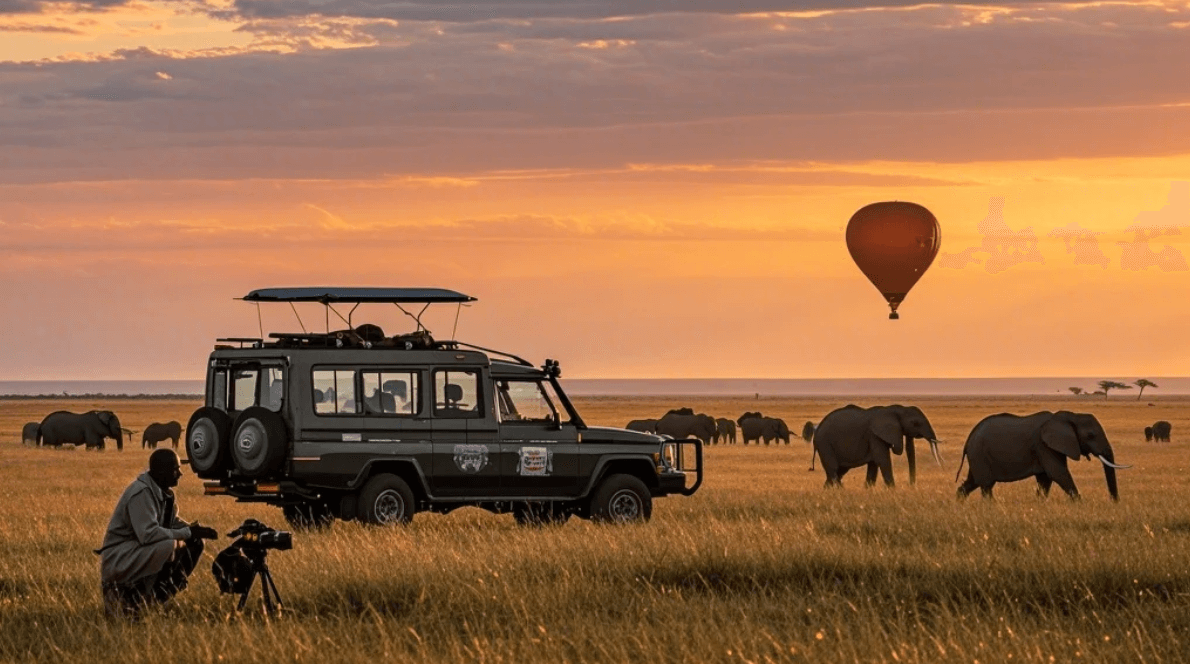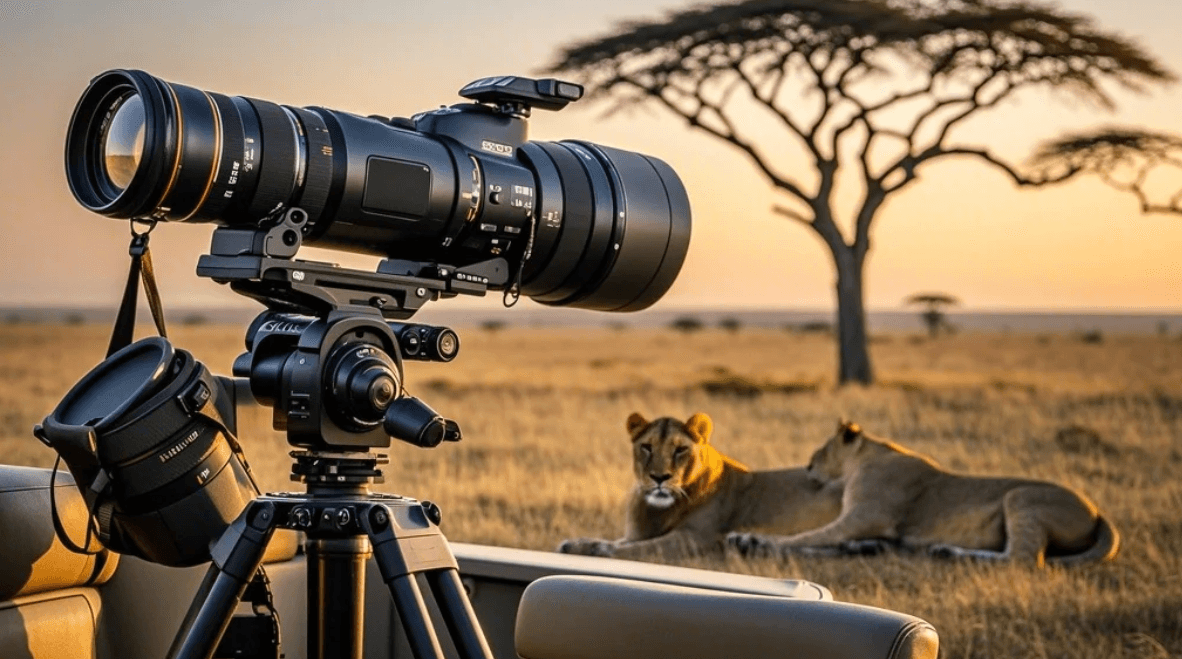Choosing the Right Camera for Safari in Kenya
| A safari in Kenya is a once-in-a-lifetime experience, offering the chance to witness Africa’s iconic wildlife in their natural habitat. From the majestic lions of the Maasai Mara to the towering elephants of Amboseli, every moment is a photo opportunity. To capture these unforgettable memories, choosing the right camera is essential. In this guide, we’ll walk you through the best camera options for a Kenyan safari, from DSLRs to mirrorless cameras, and provide tips for taking stunning wildlife photos. Why the Right Camera Matters on Safari A safari is a unique photography challenge. You’ll need a camera that can handle fast-moving subjects, low-light conditions, and the unpredictability of wildlife. The right camera will allow you to capture sharp, detailed images of animals in action, as well as the breathtaking landscapes of Kenya’s national parks. Additionally, since safaris often involve long drives and dusty conditions, your camera should be durable and easy to use on the go.  Types of Cameras for Safari Here’s an overview of the best types of cameras for a Kenyan safari, along with their pros and cons: 1. DSLR Cameras DSLRs (Digital Single-Lens Reflex) are a popular choice for safari photography due to their versatility, image quality, and wide range of compatible lenses. Pros: Excellent image quality and low-light performance. Wide selection of lenses, including telephoto lenses for wildlife. Fast autofocus and burst modes for capturing action shots. Cons: Bulky and heavy, which can be cumbersome on long drives. Requires some photography knowledge to use effectively. Recommended Models: Canon EOS 5D Mark IV Nikon D850 2. Mirrorless Cameras Mirrorless cameras are becoming increasingly popular for safari photography due to their compact size and advanced features. Pros: Lightweight and portable, making them ideal for travel. Excellent image quality and fast autofocus. Silent shooting mode, which is less likely to disturb wildlife. Cons: Battery life is generally shorter than DSLRs. Fewer lens options compared to DSLRs (though this is improving). Recommended Models: Sony Alpha 7R IV Fujifilm X-T4 3. Bridge Cameras Bridge cameras are a great option for those who want the convenience of a point-and-shoot with the zoom capabilities of a DSLR. Pros: Built-in zoom lenses with impressive reach (up to 50x or more). Compact and easy to use, making them ideal for beginners. Affordable compared to DSLRs and mirrorless cameras. Cons: Image quality is generally lower than DSLRs and mirrorless cameras. Limited manual controls and slower autofocus. Recommended Models: Nikon Coolpix P1000 Sony Cyber-shot RX10 IV 4. Point-and-Shoot Cameras Point-and-shoot cameras are compact and easy to use, making them a good option for casual photographers. Pros: Lightweight and portable, perfect for travel. Easy to use, with automatic settings for hassle-free shooting. Affordable and great for beginners. Cons: Limited zoom capabilities and image quality. Slower autofocus and burst modes, making it harder to capture action shots. Recommended Models: Canon PowerShot G7 X Mark III Sony Cyber-shot RX100 VII Essential Camera Features for Safari When choosing a camera for safari, consider the following features to ensure you’re well-equipped for the challenges of wildlife photography: 1. Zoom and Telephoto Lenses Wildlife often keeps its distance, so a camera with a good zoom range or compatible telephoto lenses is essential. Look for a camera with at least 300mm of reach for capturing distant subjects. 2. Fast Autofocus Animals move quickly, so a camera with fast and accurate autofocus is crucial for capturing sharp images. 3. Burst Mode Burst mode allows you to take multiple shots in quick succession, increasing your chances of capturing the perfect moment. 4. Low-Light Performance Many safari activities, such as early morning game drives, take place in low-light conditions. A camera with good low-light performance will ensure you can still capture high-quality images. 5. Durability and Weather Resistance Safaris can be dusty, humid, and unpredictable. Choose a camera that’s durable and weather-sealed to withstand the elements. 6. Battery Life Game drives can last for hours, so a camera with long battery life or the ability to carry spare batteries is essential. Additional Gear for Safari Photography In addition to your camera, consider packing the following accessories to enhance your safari photography experience:  1. Tripod or Monopod A tripod or monopod can help stabilize your camera, especially when using heavy telephoto lenses. 2. Camera Bag A sturdy, weatherproof camera bag will protect your gear from dust and bumps during game drives. 3. Memory Cards Wildlife photography can quickly fill up your memory cards, so bring plenty of high-capacity, fast-writing cards. 4. Lens Cleaning Kit Dust and dirt are inevitable on safari, so a lens cleaning kit is essential for keeping your gear in top condition. 5. Binoculars Binoculars can help you spot distant wildlife and plan your shots before getting closer. Tips for Taking Stunning Safari Photos Be Patient: Wildlife photography requires patience. Spend time observing animals and waiting for the perfect moment. Use the Golden Hours: Early morning and late afternoon light is soft and warm, making it ideal for photography. Focus on the Eyes: Sharp, well-focused eyes can bring your wildlife photos to life. Experiment with Composition: Use the rule of thirds, leading lines, and framing to create visually interesting images. Capture Behavior: Action shots of animals hunting, playing, or interacting are often more compelling than static poses. Conclusion Choosing the right camera for a safari in Kenya is key to capturing the magic of Africa’s wildlife and landscapes. Whether you opt for a versatile DSLR, a compact mirrorless camera, or a user-friendly bridge camera, the right gear will help you take stunning photos that you’ll treasure for a lifetime. By considering essential features like zoom, autofocus, and durability, and packing the right accessories, you’ll be well-prepared for the challenges and rewards of safari photography. So, grab your camera, pack your bags, and get ready to embark on an unforgettable adventure in Kenya. |
wendy
|
2025.03.21




